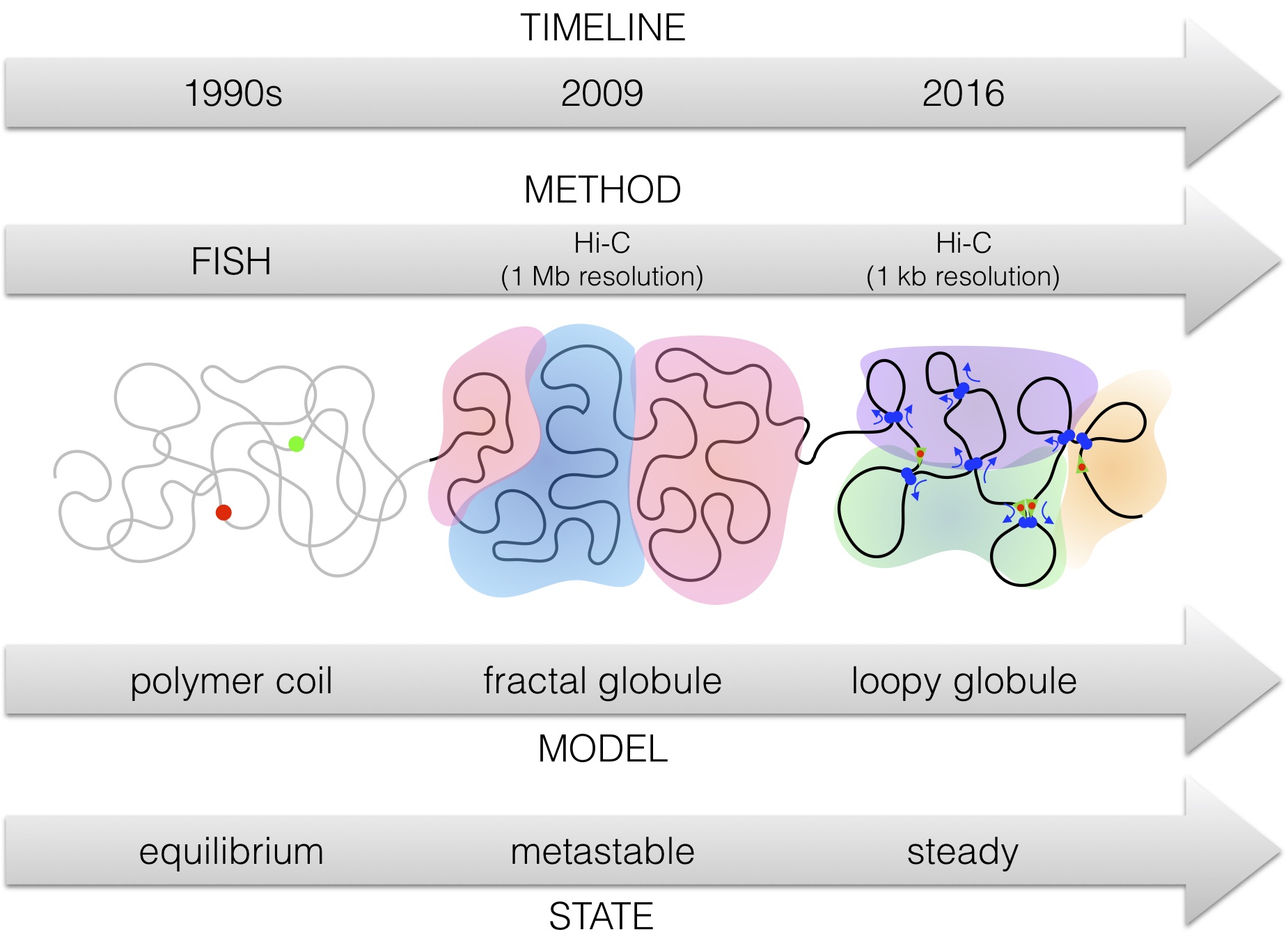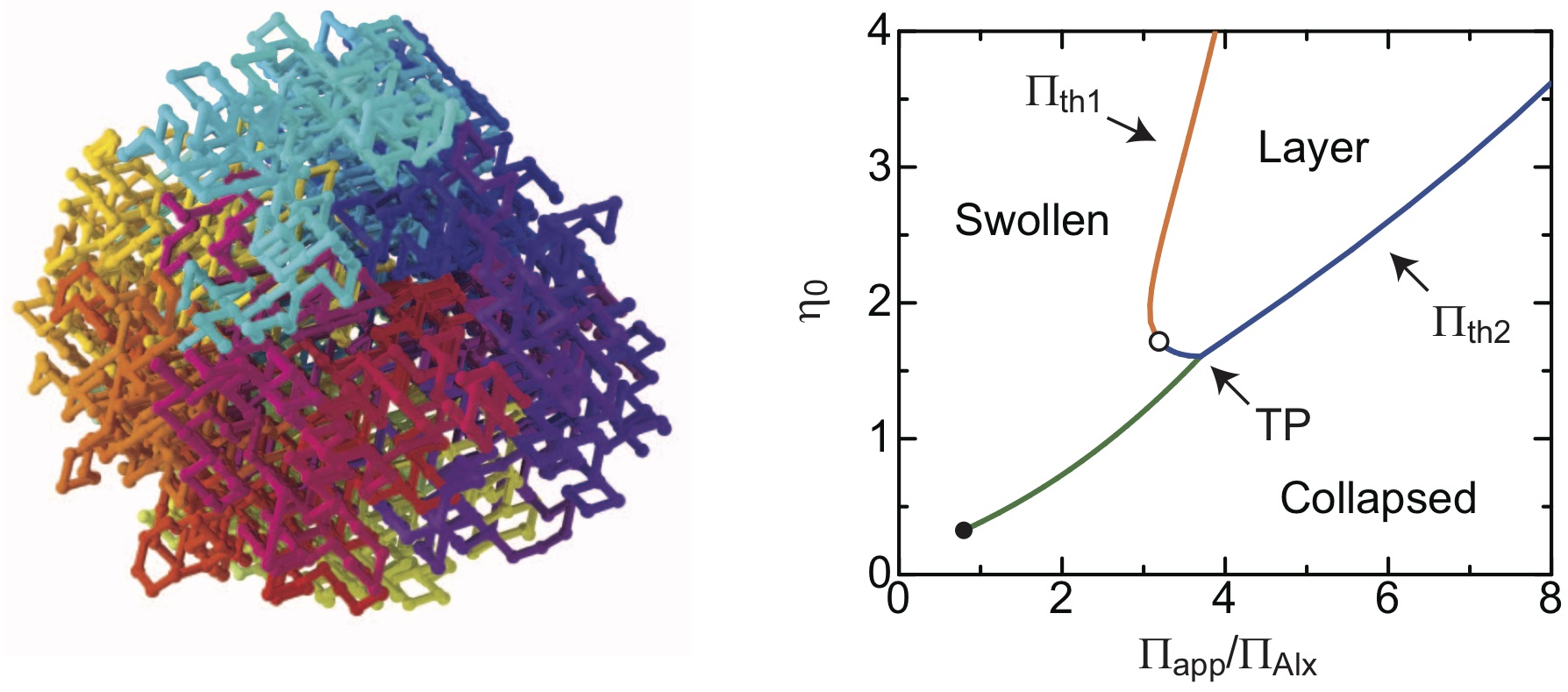There are a lot of recent progess on the understanding of chromatin at large scales.
New experimental methods, based on e.g. chromatin conformation capture, have changed our
polymer physics view of chromatin at large scales. Whereas in the 1990s it was an equilibrium view,
this has changed in 2009 to a non-equilibrium picture, the fractal globule.
In the meantime, chromotin conformation capture at higher resolution has led
rather to a steady-state picture, something like a loopy globule, a polymer decorated
with loop extruding motor complexes, see
(Sazer 2018) for a review.

We address various questions that these new experiments raise, including
whether collapsed globules are stable (Schram 2013),
whether active processes drive the overall nucleus structure (Yamamoto 2017a),
what are possible mechanisms driving loop extrusion (Yamamoto 2017b),
what type of polymer dynamics is caused by loop extrusion (Yamamoto 2019a),
and how it influences phase-separated liquid droplets of transcriptional activators (Yamamoto 2019b).

For details check out:
S. Sazer and H. Schiessel:
The biology and polymer physics underlying large-scale chromosome organization, Traffic
19, 87-104 (2018)
R. D. Schram, G. T. Barkema and H. Schiessel:
On the stability of fractal globules, J. Phys. Chem.
138, 224901 (2013)
T. Yamamoto and H. Schiessel: Transcription dynamics stabilizes nucleus-like layer structure in chromatin brush, Soft Matter
13, 5307-5316 (2017a)
T. Yamamoto and H. Schiessel: Osmotic mechanism of the loop extrusion process, Phys. Rev. E
96, 030402(R) (2017b)
T. Yamamoto, T. Sakaue and H. Schiessel: Loop extrusion drives very different dynamics for Rouse chains in bulk solutions and at interfaces, Europhys. Lett.
127, 38002 (2019a)
T. Yamamoto and H. Schiessel: Dilution of contact frequency between superenhancers by loop extrusion at interfaces, Soft Matter
15, 7635-7643 (2019b)



